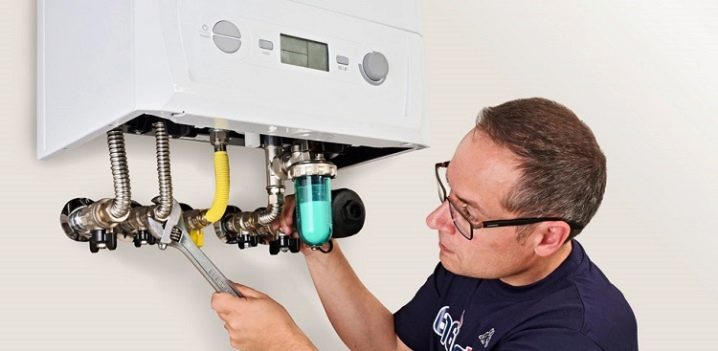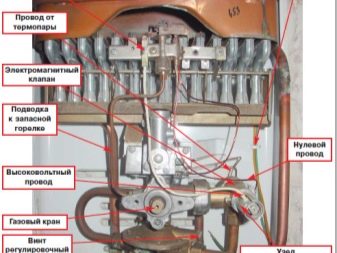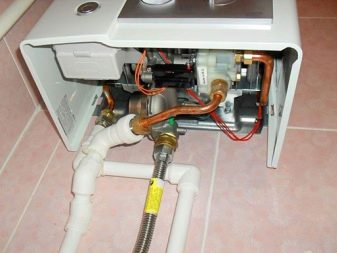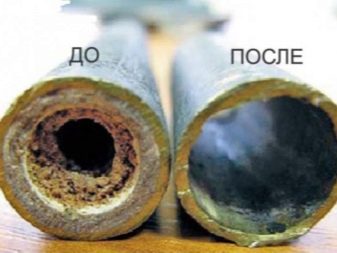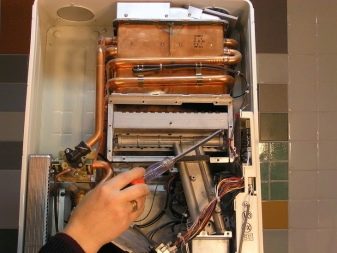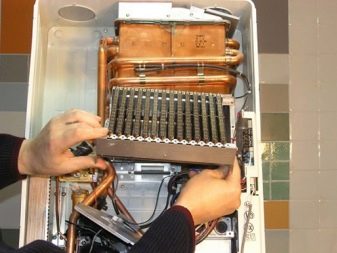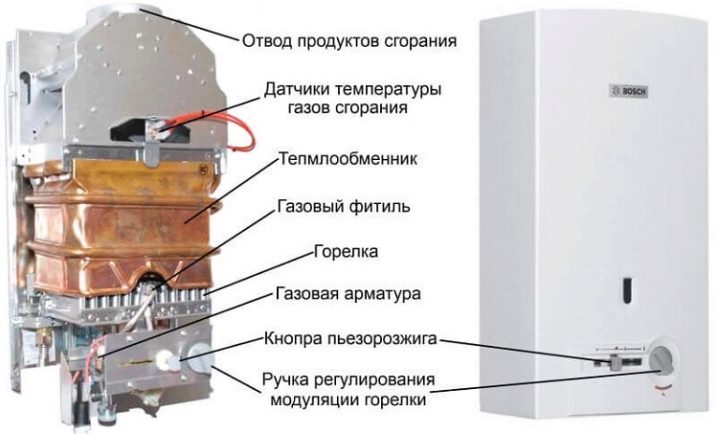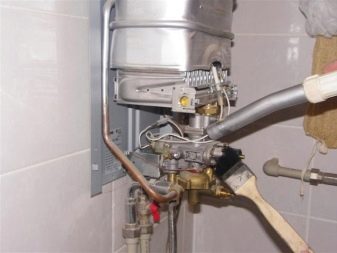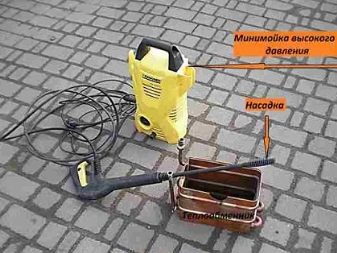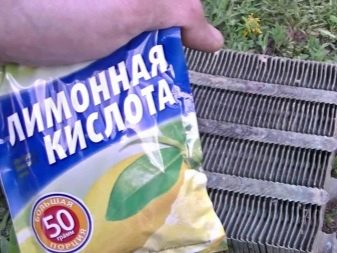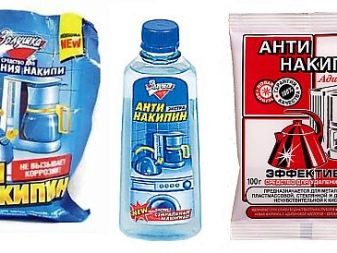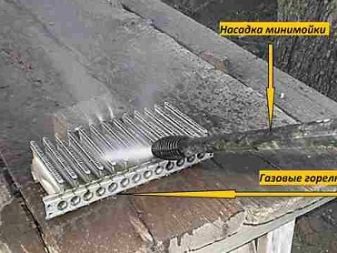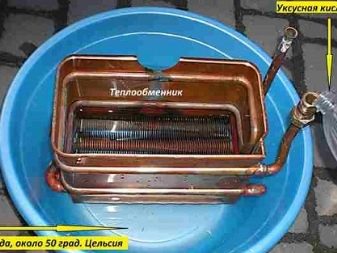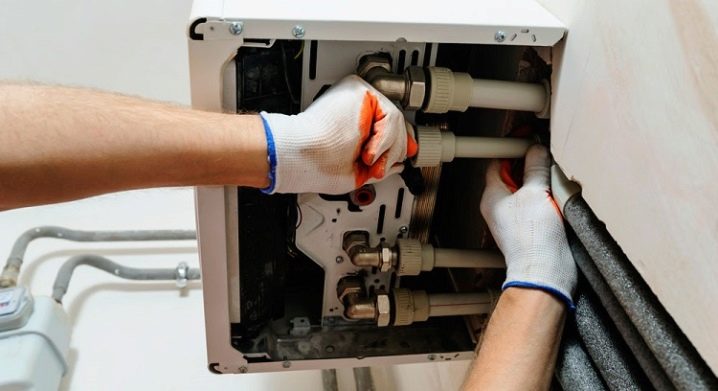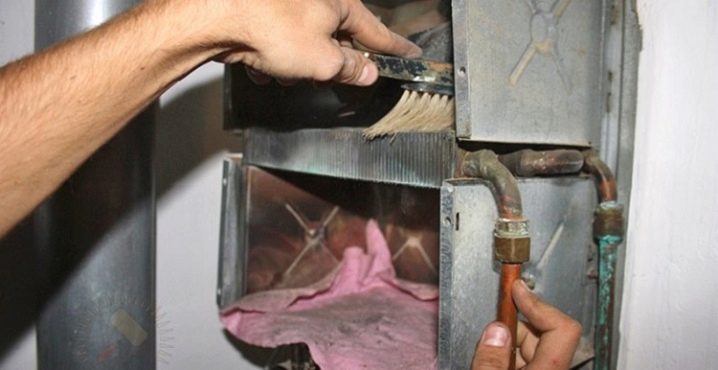How to clean the gas column?
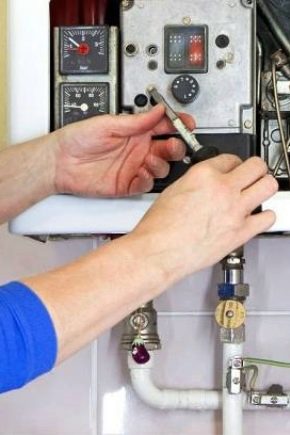
Today, geysers are present in many homes. And it can be not only a private house, but also an ordinary city apartment in an apartment building. These units have many positive characteristics, which makes them very popular. However, columns on gas require some care - from time to time they need to be cleaned. Today we will analyze in detail how to do it correctly.
Why does soot appear?
Many owners of gas heaters are faced with the problem of the appearance of soot. To get rid of such pollution, you can contact the experts, however, the implementation of these works is not difficult, so everything can be done independently.In cases where contamination appears in the holes of the nozzles, it will be possible to completely do using a small brush or a wire of small thickness.
Traces of soot very often appear in the unit due to leaks that occur in the pipes. At this time, the emission of fuel is so weak that the household will hardly notice its smell. To identify such violations, you need to check the pipe joints. To do this, take a brush and put them a soap solution. If the applied layer has become covered with bubbles, then it will indicate that it is time to call the gas service employees.
Soot may appear due to poorly cleaned radiator. In this case, you can not do without such a device as a vacuum cleaner.
The cause of contamination of the gas column can be and low water quality. Foreign elements from the liquid can accumulate and as a result settle on the filter-grid. This adversely affects the throughput of the unit. Those inclusions, which still managed to overcome the barrier in the form of a filter, can begin to collect on the membrane part. In such conditions, this part ceases to respond correctly to pressure changes.
Another common problem with gas powered columns is scale. It appears due to the crystallization of salts that are present in the composition of the liquid. Here we must take into account that the higher the temperature value of the water, the sooner the salt will accumulate on the important components of the equipment. In most cases, scum appears in such equipment because of the continuous operation of the burner or because of the heating, which exceeds 50 degrees.
Signs of pollution
If the water-heating unit in an apartment or private house is seriously contaminated, it must be cleaned so that it can continue to function properly without inconvenience.
There are the following main signs of gas column pollution that are important to pay attention to.
- Technique clogged, if it does not start or quickly turns off after starting.
- Wick goes out.
- If the RCD is too frequently triggered, this should also indicate that the unit is contaminated.
- The equipment must be cleaned if the burner works correctly in it, however, the water warms up too little.
- The low pressure of the liquid from the faucet can also indicate the pollution of the column.
- If there is a burning smell in the room where the equipment is located, it should be thoroughly cleaned.
- If you notice black soot falling out of the column, this will indicate a serious pollution of the equipment. You will need to start cleaning it as soon as possible.
- When contaminated speakers often work with loud characteristic clapping.
- Also, a flame of yellow or orange color can come out of the column.
If you notice in your gas column at least one of these signs, then you should not waste time. The equipment will need to be cleaned with high quality in order to prolong its service life.
Cleaning frequency
Many users wonder how often a gas column needs to be cleaned in order for it to function efficiently. It must be borne in mind that the frequency of cleaning of such equipment is directly dependent on how often the water heater is used.
Also the following parameters are important here:
- pressure level and degree of water hardness;
- the status of important nodes;
- the presence of a layer that protects against scale;
- technical condition of smoke exhaust.
In certain circumstances, the work of the same type of flow radiator is required to be cleaned after six months. In other conditions - after three years.
As for the usual preventive cleaning, they are recommended to be done at intervals not exceeding a year.
Audit methods
It does not matter what model of gas column is present in the house. All versions of such units are cleaned about the same. To do this, use various tools and compositions that are different efficiency.
However, before proceeding to such work, it is necessary to conduct an audit of the water receiving unit in the equipment. It is this part that is responsible for the gas supply to the burner under the conditions of a certain water pressure. To perform this procedure, it is necessary to disconnect the water intake unit from the water supply and gas supply lines. Usually it turns out to be done without removing the column casing that performs the decorative function.
To make sure that the device is operational, you can vigorously exhale the air in the compartment necessary to connect cold water.
This technique is analyzed in the following order:
- first remove the casing;
- then remove the water filter;
- after that, the heat exchanger is disconnected from the water pipes.
How to rinse?
If you decide to wash the column at home with your own hands, then you should become familiar with the intricacies of this process. Such procedures directly depend on the specific method that you have chosen to clean the equipment. Consider them.
Mechanical cleaning
With this method of cleaning, a sponge, a small brush with not very stiff bristles, as well as an easy-to-use mini-sink that works under high pressure are usually used. The best and fastest geysers are cleaned with the very latest appliances.
Before embarking on such a cleaning of the unit, a specialized liquid composition is applied to the radiator plates, which makes it possible to remove carbon deposits more quickly. Instead of such a solution, it is permissible to use dishwashing detergents - they also do an excellent job with such tasks.
Of course, it is possible to combine at once two methods of removing contaminants inside the coil. To do this, additionally pour a tool designed to eliminate accumulations of scale.After 30-40 minutes (if the method is combined, then after 30-180 minutes) all components of the structures are rinsed, attracting running water under pressure.
Chemical cleaning
Equipment permissible to clean and chemical reagents. In such situations, various means are used. When choosing this option, the heat exchanger is simply removed from the equipment, and then filled with the substance selected for cleaning.
Let us consider in more detail what components can be used for qualitatively cleaning the gas column.
- Hydrochloric acid. This tool is used in conjunction with special additives that are designed to prevent too active reaction from the interaction with metals. The metal base, in contact with acid, may lose its protective layer. The walls of the coil at the same time often become thinner, so without inhibitors can not do here. After washing the radiator, the waste waste of the acidic agent is neutralized using an alkali-based solution. For example, it can be soda mixed with water.
- Orthophosphoric acid. This is a special neutral compound. It does not "conflict" with carbonates,nor does it harm the metallic elements in the system. A similar reagent is obtained by mixing H3PO4 and water, keeping the ratio 1: 6.
- Aminosulfonic acid. This remedy is intended to eliminate iron oxide. In order for the metal parts in the unit during cleaning of the heat exchanger not to undergo rapid wear, it is recommended to refer to a composition containing corrosion inhibitors, water with a concentration of NH3SO3 in a volume of 2-3%.
- Citric / Acetic Acid. These products are used today very often. This is explained by the fact that both citric and acetic acids do not damage metal surfaces. In addition, they do not harm human health, which is not the case with salt or phosphorus agents. If the response of many compounds takes about 30-40 minutes, then with citric and acetic acids will take about 3-4 hours.
- Mix for destruction of a scum. Such highly effective means will be found in specialized outlets. Many users turn to products such as Detex, Cleaner E or Boiler - they seamlessly destroy scale in a short time. After a number of concentrated substances, it is necessary to additionally treat the cavities being cleaned with a neutralizing agent. Other compositions do not require such processes.
Dynamic
Many people use a special dynamic method of eliminating carbonates from column details. This procedure is carried out with the use of boosters, which are devices aimed at the circulation of a liquid that is active for scale and scale.
It is strongly not recommended to contact aggressive hydrochloric acid or its concentrates in the process of flushing the hydraulic system of a water heater. This is due to the fact that such processes are capable of provoking the destruction of rubber seals.
Useful tips
Measures to clean the gas column design advised to carry out in the open air or in a sufficiently ventilated space.
This rule is especially relevant when it comes to washing the unit with an aggressive chemical agent.
- Before proceeding to the revision of such equipment, you need to close the valve responsible for the supply of fuel and cold water. You will also need to unscrew the nuts from the supply and hot lines, then drain the liquid from the apparatus.
- If there is a column in your house that has a heat exchanger made of copper, then you will be able to remove plaque from it using hydrochloric acid.For other alloys, the use of plain citric acid is acceptable.
- If you independently remove the heat exchanger, then you need to remember that you need to disconnect the wires from the temperature sensor.
- Working with a gas column, try not to lose the rubber parts that perform the function of seals. In addition, experts advise to change them to new ones after the completion of work on cleaning equipment.
- Note that the duration of the flushing of the equipment depends on how dense the layer of pollution is inside the heat exchanger. It may take from 2-3 hours to 2 days.
- When removing the protective cover from the column should be as careful as possible. This requirement must be borne in mind in order not to accidentally damage the electronic control panel and other important design elements.
- In the fight against scum, many users prefer a tool such as "Antinakipin." It is not only highly effective, but also safe to use.
- If during the flushing of water heating equipment a gas leak was detected, then it is necessary to shut off the pipe as soon as possible and then immediately call the foremen from the gas service.
- Scale-fighting chemicals need to be poured in a thin stream, since a quick fill can cause too much reaction in the heat exchanger. Because of this, the substance can simply splash out.
- If any kind of pollution accumulates in the column too quickly, then you should look for a malfunction that is the cause of such problems.
- In order to accumulate scale deposits in the heat exchanger for a long time, the temperature settings on the unit's control panel should be correctly set.
- The gas component of the units should not be disassembled independently. Such work should be done by a master from the gas service.
- Dirt and grime from the heat exchanger can be removed using a stiff brush. However, the same device will not be able to clean the nozzle - there can not do without a thin metal wire.
- When working with aggressive chemicals, it is recommended to use reliable means of protection, for example, gloves. Protect your skin and mucous membranes from getting used for cleaning compounds.
- Use quality water purifying filters. With such additions, the equipment will definitely last longer.
- In no case do not begin to independently disassemble and clean / flush the column if you do not understand its structure or are at all afraid to encounter such works. It is better to call the gas service employees - they will do everything quickly and correctly.
The next video is waiting for you to clean the gas heater Junkers.

